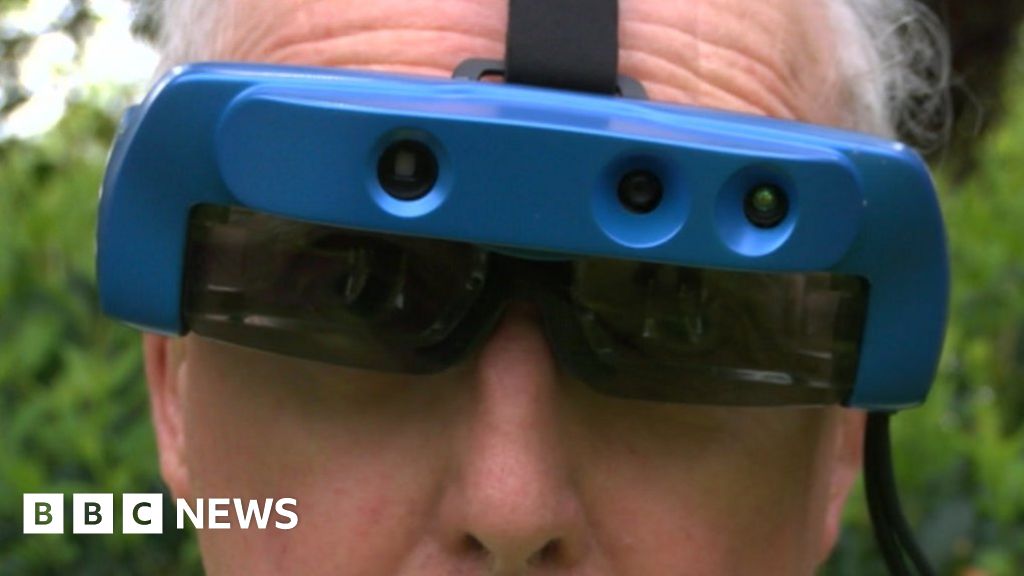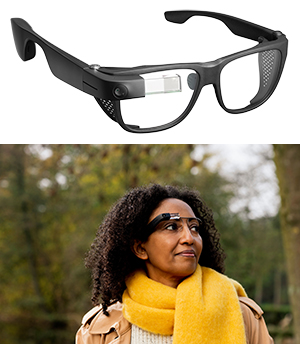How Smart Glasses for the Visually Impaired Are Revolutionizing Daily Life
Empowering Self-reliance With Assistive Innovation for the Blind
The combination of assistive modern technology for people who are visually impaired or blind stands for a significant development in promoting freedom and improving high quality of life. With a variety of devices-- from display readers to innovative responsive tools-- these modern technologies not just assist in navigation and communication yet likewise advertise social addition and engagement in different elements of life.
Understanding Assistive Modern Technology
Although assistive technology has progressed dramatically over the years, its essential objective continues to be the same: to enhance the top quality of life for individuals with impairments, specifically those that are blind or visually impaired. This modern technology encompasses a wide variety of devices and devices that promote self-reliance and capability in daily tasks.
Assistive technology can be categorized right into low-tech and state-of-the-art services, each designed to fulfill certain needs. High-tech tools usually include software applications, specialized equipment, and flexible gadgets that utilize sophisticated technology to give support in numerous contexts. Conversely, low-tech remedies may include everyday products that are changed to improve accessibility, such as magnifiers or tactile pens.
The integration of assistive innovation right into the lives of individuals that are blind or aesthetically impaired not just advertises autonomy however additionally fosters social addition and participation in specialist and educational atmospheres. By leveraging these technologies, users can browse their environments, access information, and interact properly, thereby improving their total lifestyle. Comprehending assistive modern technology is crucial for supporters, professionals, and caretakers that aim to support individuals in maximizing their potential and achieving greater self-reliance.
Sorts Of Assistive Tools
Assistive tools for the aesthetically damaged and blind are crucial devices that boost daily obeying addressing specific challenges encountered by users. These devices can be broadly classified right into three main types: optical devices, digital tools, and sensory gadgets.

Sensory tools, such as Braille display screens and responsive maps, give different means to obtain details. Braille presents transform digital text into Braille, enabling users to check out touch. Responsive maps use spatial understanding with elevated structures and lines, enabling much better environmental awareness.
With each other, these assistive gadgets equip individuals with aesthetic problems to engage more totally with their environments, promoting greater independence and self-confidence in everyday activities.

Effect On Every Day Life
The combination of assistive technology right into the lives of individuals that are blind or visually impaired dramatically enhances their capacity to connect and navigate with the globe around them. Tools such as screen viewers, Braille shows, and mobile applications help with accessibility to info, allowing individuals to engage with electronic content, connect efficiently, and take care of everyday jobs separately.
Furthermore, innovations like smart glasses and navigating applications supply real-time assistance in unknown atmospheres, improving flexibility and confidence. These devices enable individuals to recognize challenges, reviewed signs, and also identify faces, thus promoting a feeling of autonomy in public rooms. Additionally, home automation systems, which can be managed via voice commands, permit people to manage their living atmospheres better, boosting comfort and safety.
The effect of assistive modern technology extends beyond functional jobs; it promotes social addition and emotional health. By linking the gap between individuals and their Screen readers for the blind environments, these modern technologies empower users to take part completely in area tasks, pursue educational opportunities, and participate in significant connections. Inevitably, the advancement of assistive technology is important in redefining the opportunities for individuals that are visually impaired or blind, leading to an extra inclusive and available culture.
Success Stories and Testimonials

One more powerful endorsement originates from Mark, a recent university grad that utilized display analysis software throughout his scholastic trip. This technology allowed him to gain access to course products and take part in discussions, inevitably causing his successful change into the workforce. Mark credits assistive modern technology for equipping him to attain his occupation goals, highlighting its role in leveling the having fun field for people with visual problems.
Additionally, recreation center have reported boosted involvement in their programs many thanks to the introduction of obtainable digital systems. These platforms have made it easier for individuals to attach, share resources, and assistance one another. These success stories jointly underscore the profound result of assistive technology in cultivating independence, improving lifestyle, and breaking down barriers for the blind and aesthetically damaged neighborhood.
Future Fads in Assistive Tech
Emerging modern technologies are positioned to transform the landscape of assistive technology for people who are aesthetically damaged or blind. Developments in man-made knowledge (AI) and artificial intelligence are improving the capacities of devices, enabling more user-friendly customer experiences. AI-driven applications are increasingly able to read and recognize objects text aloud in real-time, providing users with important information about their surroundings.
Furthermore, improvements in wearable innovation are creating brand-new chances for self-reliance. Smart glasses geared up with increased fact functions can overlay crucial details onto the individual's field of view, facilitating navigation and communication with the atmosphere. Additionally, the assimilation of Web of Things (IoT) tools is improving accessibility in clever homes, allowing customers to manage devices and get notifications with voice commands or tactile interfaces.
The development of braille screens and responsive feedback systems is likewise on the rise, promoting accessibility to electronic content and enhancing interaction. As these technologies proceed to advance, they promise to improve day-to-day living, educational opportunities, and work leads for individuals with visual disabilities. Continuous collaboration between technologists, individuals, and campaigning for teams will be necessary in making certain these innovations satisfy the requirements of the neighborhood properly.
Conclusion
To conclude, assistive innovation plays an essential function in boosting the freedom of people that are aesthetically damaged or blind. By providing important tools and resources, these technologies help with enhanced gain access to, navigation, and communication to information, therefore cultivating freedom and positive self-image. The transformative effect of assistive tools not only promotes reliable interaction with the environment yet also motivates social addition and involvement in various elements of life, inevitably empowering individuals to prosper within their areas.
The assimilation of assistive innovation for individuals that are visually damaged or blind represents a substantial advancement in cultivating freedom and boosting quality of life.The assimilation of assistive modern technology into the lives of individuals that are blind or visually harmed not only advertises autonomy yet also promotes social addition and involvement in instructional and specialist settings. Inevitably, the advancement of assistive modern technology is crucial in redefining the possibilities for people that are blind or visually impaired, leading to a more comprehensive and obtainable society.
Lots of people who are blind or visually impaired have shared motivating success tales that highlight the transformative effect of assistive innovation on their lives.In conclusion, assistive technology plays a crucial duty in improving the independence of individuals that are blind or visually impaired.